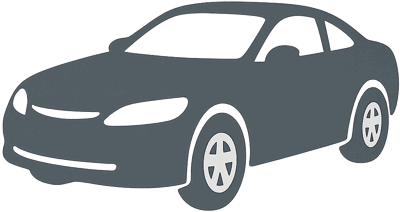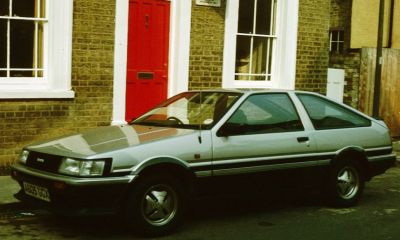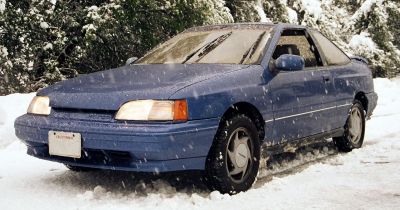 1965 Porsche 912 Dimensions, Size & Specs
1965 Porsche 912 Dimensions, Size & SpecsMeasurements of the 1965 Porsche 912, engineered for optimal performance and comfort
| Dimensions | |
|---|---|
| Length: | 4163 mm163.9 in13.7 ft |
| Width: | 1610 mm63.4 in5.3 ft |
| Height: | 1320 mm52.0 in4.3 ft |
| Ground Clearance: | 150 mm5.9 in0.5 ft |
| Weight Specifications | |
| Curb Weight: | 985 kg2172 lbs |
| Maximal permitted Weight: | 1265 kg2789 lbs |
| Tire Specifications | |
| Rims Size: | 15-inch rims:
|
| Tire Size: |
|
The Porsche 912 is a classic coupe produced between 1965 and 1969, representing an important chapter in Porsche's history. With an overall length of 4163 mm (163.8 inches), a width of 1610 mm (63.4 inches), and a height standing at 1320 mm (51.97 inches), the 912 offers a compact and agile profile typical of mid-1960s sports cars. Its curb weight is notably light at 985 kg (2172 lbs), contributing to nimble handling and spirited performance, while its maximum permissible weight reaches 1265 kg (2789 lbs). The vehicle maintains a ride height of 150 mm (5.9 inches), providing a balanced ground clearance suitable for both everyday driving and sportier road conditions. Mounted on 15-inch rims sized 5.5J x 15 with tires measuring 185/70 R15, the Porsche 912 ensures a blend of vintage aesthetics and driving dynamics. This combination of dimensions and mass underlines the Porsche 912 as a compact yet carefully engineered sports car, fitting well in the historical lineup between the Porsche 356 and Porsche 911. Car enthusiasts and collectors value the 912 not only for its size and style but also for its place as an affordable entry into the Porsche family during the late 1960s. Its elegant coupe design, modest footprint, and lightweight construction make it a standout model for both classic car events and everyday appreciation.
Discover the standout features that make the 1965 Porsche 912 a leader in its class
Have a question? Please check our knowledgebase first.
The Porsche 912, produced between 1965 and 1969, measures 4163 mm (163.9 inches) in length, 1610 mm (63.4 inches) in width, and 1320 mm (51.97 inches) in height. These dimensions reflect the classic sports coupe design of the mid-1960s era. Its relatively compact size made it maneuverable and suitable for both city driving and spirited road use, while maintaining the iconic Porsche proportions similar to its 911 sibling. The slim width and sleek low height further contribute to its aerodynamic profile and low center of gravity, enhancing handling performance.
The Porsche 912 has a curb weight of approximately 985 kg (2172 lbs), which refers to the vehicle's weight without passengers or cargo but including necessary operational fluids. The maximum allowed weight, including passengers and cargo, is 1265 kg (2789 lbs). This relatively light weight, especially compared to the more powerful 911, contributes to the 912’s agility and efficiency. Its balanced weight distribution and lighter mass made the 912 an approachable and practical sports car during its production period.
The Porsche 912 features a ride height or ground clearance of 150 mm (5.9 inches). This relatively low clearance helps lower the car's center of gravity, improving stability and handling around corners and at higher speeds. However, it does mean the vehicle requires careful navigation over speed bumps or uneven surfaces to avoid scraping. In most typical urban and residential settings, including driveways and garages, this ground clearance is sufficient to prevent damage to the undercarriage, provided that drivers take caution on very rough terrain.
Yes, the Porsche 912 has dimensions that allow it to fit comfortably into a standard garage. With a length of 4163 mm (163.9 inches), width of 1610 mm (63.4 inches), and height of 1320 mm (51.97 inches), the 912 is smaller and narrower than many contemporary cars, making it ideal for typical domestic garages. Standard garage spaces are usually around 2.4 to 3 meters wide and approximately 5.5 to 6 meters long, which means the 912 leaves enough clearance for door opening and easy access. Additionally, its height is well below most garage door clearances, so owners should have no issues parking it safely indoors.
The Porsche 912 came equipped with 5.5J x 15 inch rims, fitted with tires sized at 185/70 R15. These tire specifications reflect the handling focus of the vehicle, providing a good balance between ride comfort, grip, and road contact. The 15-inch rims offered a classic sports car stance and contributed to responsive steering. The tire width of 185 mm and aspect ratio of 70% provided adequate sidewall cushioning while maintaining good road feedback. This combination helped give the 912 predictable cornering capabilities and a smooth ride over rougher roads, suitable for both spirited driving and daily use.
The Porsche 912 shared many design and dimensional similarities with the early Porsche 911 models from the same era. Both cars have comparable lengths and widths, with the 912 measuring 4163 mm (163.9 inches) long and 1610 mm (63.4 inches) wide, closely matching the dimensions of the early 911 series. Compared to its immediate predecessor, the Porsche 356, the 912 is slightly larger and wider, reflecting an evolution towards a more modern and spacious sports coupe. While the 912 carried over the aesthetic and chassis design elements, it was powered by a less powerful four-cylinder engine making it more affordable and lighter than the 911, which typically had a more robust six-cylinder setup.
In comparison with other popular 1960s sports coupes such as the MG MGB or Jaguar E-Type, the Porsche 912 offers a more compact and lighter option. The 912’s length of 4163 mm (163.9 inches) is shorter than the Jaguar E-Type which measures around 4460 mm (175.6 inches) but is similar to the MG MGB’s approximate 4025 mm (158.5 inches). In terms of weight, the 912’s 985 kg (2172 lbs) curb weight is lighter than many contemporaries, giving it an advantage in agility and fuel efficiency. Its compact dimensions and relatively low weight helped deliver engaging handling typical of Porsche, while being easier to drive and park compared to larger sports cars of the same era.
The Porsche 912 Coupe is designed as a classic two-door sports car with seating for four occupants, although the rear seats are best suited for smaller passengers or short trips. The interior dimensions correspond closely with the compact exterior size, providing comfortable front seats with adequate headroom and legroom for the driver and front passenger. Rear seat space is limited in both legroom and headroom, typical of sports coupes in this segment and time period. Storage capacity is minimal, emphasizing performance and driver engagement over cargo space, though the rear seats can fold down in some cases to increase storage volume.
The Porsche 912 was equipped with a 1.6-liter flat-four air-cooled engine producing around 90 horsepower. This engine choice distinguished the 912 from its more powerful sibling, the 911, which featured flat-six engines. The 912’s engine provided a smooth and responsive driving experience with fuel efficiency superior to many sports cars of its era. While it did not have the outright performance of a 911, the 912's lighter weight allowed nimble handling and enjoyable spirited driving. Its balanced setup made it an attractive alternative for drivers seeking the Porsche experience with a lower purchase and maintenance cost.
The Porsche 912 shares its wheelbase with the early Porsche 911, measuring approximately 2211 mm (87 inches), which contributes to the car’s balanced and agile handling characteristics. The front and rear track widths are roughly similar to its sibling models, designed to optimize road holding and cornering stability. The relatively short wheelbase combined with a low center of gravity and light curb weight results in a responsive and engaging driving experience. This setup allowed the 912 to perform well in tight turns and maintain composure on twisty roads, characteristics appreciated by enthusiasts and sports coupé drivers alike.
Discover similar sized cars.

| Production: | 1978-1987 |
|---|---|
| Model Year: | 1974 |
| Length: | 4205-4260 mm165.6-167.7 in |
| Width: | 1664 mm65.5 in |
| Height: | 1330 mm52.4 in |

| Production: | 1985-1988 |
|---|---|
| Model Year: | 1983 |
| Length: | 4180-4200 mm164.6-165.4 in |
| Width: | 1625-1645 mm64.0-64.8 in |
| Height: | 1335 mm52.6 in |

| Production: | 1989-1996 |
|---|---|
| Model Year: | 1989 |
| Length: | 4215 mm165.9 in |
| Width: | 1640 mm64.6 in |
| Height: | 1328 mm52.3 in |
